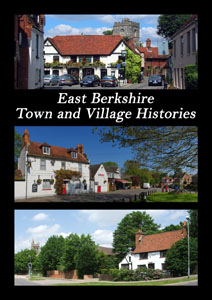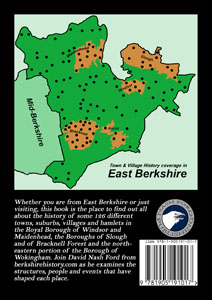 |
 |
||||||||
|
|
Water Oakley Home of Hammer Horror
The crossroads where the Windsor Road meets the Fifield Road and Monkey Island Lane is sometimes known as Builders’ Cross. According to an old story, the Anglo-Saxon church of Bray parish stood there. Being some way from the village, the locals found it difficult to keep the building in good repair. By King Edward I’s reign, it was almost falling down, so they agreed to build a new church. However, every time work began, evil spirits destroyed the builders’ progress. Eventually, the Queen, who owned the manor (hence nearby Queen’s Eyot), was called in to help. She delegated the situation to her beadle, who suggested the church site be moved to Bray. The new church supposedly had two pieces of sculpture from the old one transferred to it: one of a dog or horse can easily be seen on the outer wall of the old chantry chapel in the churchyard. It has been suggested that the chantry sculpture originally came from a Roman temple, at Builders Cross, dedicated to Hecate. It would have been converted for Christian use by the early Anglo-Saxons. This goddess was the patroness of cemeteries and a Romano-British burial ground was discovered near Builderswell, the area around the spring that feeds the gravel pits behind the crossroads. These pits were previously a mill pond and originally a natural lake. Many broken bronze swords and spears have been recovered there, indicating a connection with the cemetery. At death, the Celts appear, like King Arthur, to have been in the habit of throwing their most prized possessions into the swirling depths of lakes or rivers. There is further evidence that, in Iron Age times, the bodies went in too. There may have been a settlement of some kind at Arbour Bridge Pasture between Down Place Farm and Builderswell. Places called Cold Harbour are associated with Roman roads and may have been local stop-over points. The medieval area of settlement in Water Oakley was around Queen’s Wharf. Windsor Forest timber, for the rebuilding of the choir roof at Westminster Abbey, was transported down river from there in 1352. The area is now the site of Oakley Court, a castellated and turreted gothic revival mansion, built in 1857 for Richard Hall-Saye. During the Second World War, it was the home of Frenchman, Ernest Olivier, the Turkish Consul in Monte Carlo. He entertained many diplomats there. Although evidence is lacking, there is a strong tradition that General De Gaulle was a frequent visitor and hence the Court is often erroneously said to have been the headquarters of the French Resistance. The house is now a luxury hotel but it is perhaps best known for its many film roles including:
This is perhaps not surprising as the estate was carved out of the adjoining Down Place, which is the home of Bray Studios. The house was bought by Hammer Films in 1957 and was where many of their horror movies were made. Down Place house itself dates from about 1750 and was the popular meeting place of the Kit-Kat Club during the ownership of Jacob Tonson. This group of gentlemen met, around the time of King William III’s death, to ensure the Protestant succession of the Crown. Read more history of Water Oakley in David Nash Ford's book, 'East Berkshire Town and Village Histories'. Click to Order direct from the Author.
|
||||||||
| © Nash Ford Publishing 2001; Revised 2020. All Rights Reserved. | |||||||||





